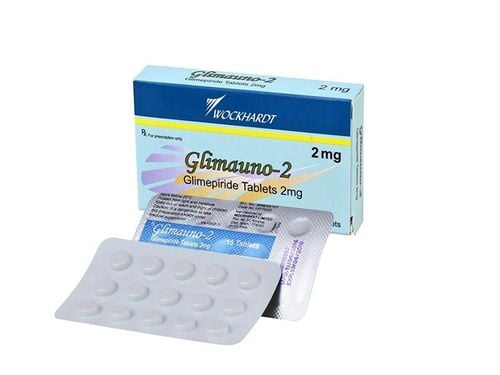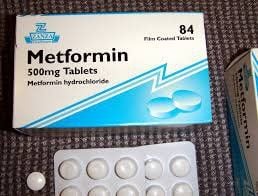This is an automatically translated article.
The drug Amapileo is made in the form of tablets, with the main ingredient being Glimepiride. The drug is used to control blood sugar in patients with type 2 diabetes.
1. What is Amapileo?
What is Amapileo drug? 1 tablet of Amapileo has Glimepiride as the main ingredient with a strength of 2mg. Glimepiride is a new generation of hypoglycemic sulphonamides, belonging to the group of sulfonylureas used in the treatment of type 2 diabetes. It acts primarily by stimulating the beta cells of the islets of Langerhans in the pancreas to release insulin. This effect of the drug is based on the increased responsiveness of these cells to the physiological stimulus, glucose. In addition, Glimepiride also has extra-pancreatic effects (in other words, Glimepiride has a dual action: Pancreatic and extrapancreatic). Specifically:
Effects of the drug on insulin release: The drug regulates insulin secretion by closing ATP-dependent potassium channels in the membrane of beta cells. This causes membrane depolarization, increases calcium movement into the cell, stimulates insulin release from the cell; Effects of extrapancreatic drugs: Improves the sensitivity of peripheral tissues to insulin, reduces insulin recovery in the liver. Indications for use of Amapileo:
Treatment in combination with diet and exercise to control blood sugar in non-insulin dependent type 2 diabetes. Contraindications to using Amapileo:
Patients with hypersensitivity to Glimepiride, sulfonylurea or sulfonamides, other ingredients of the drug; People with insulin-dependent diabetes, patients with coma and diabetic keto-acidosis; Patients with severe liver and kidney failure: Should switch to insulin; Pregnant and lactating women.
2. How to use and dose of the drug Amapileo
Usage: Orally. If taken immediately before or about 30 minutes before a meal, the effect is similar. Patients should take the drug once a day at breakfast or the first main meal of the day. A single daily dose allows to control metabolism within 1 day and night.
Dosage:
Initial dose in previously untreated patients: 1 - 2mg/day; Debilitated patients, malnourished patients, patients with liver failure, kidney failure, the elderly, patients at risk of hypoglycemia: Use a dose of 1mg/day; Patients who have been treated with other antidiabetic drugs: Use dose 1-2mg/day, maximum 2mg/day; Maintenance dose: 1 - 4 mg/day (in patients already using Glimepiride 1 mg/day, increase to 2 mg/day if desired glucose levels have not been reached after 1-2 weeks of treatment; after taking up to a dose of 2 mg/day) Subsequent dose adjustment will depend on patient tolerability and response). The dose should be increased slowly, each time increasing by no more than 2mg/day, at 1-2 week intervals, to a maximum of 8mg/day.
3. Side effects of the drug Amapileo
When using Amapileo, patients may experience side effects such as: dizziness, headache, diarrhea, feeling full in the epigastric region, nausea, vomiting, abdominal pain, confusion. temporary visual disturbances (when starting the drug),... In addition, the most important side effect is hypoglycemia. When experiencing side effects of the drug, the patient should stop taking the drug and immediately notify the doctor for timely and effective intervention measures.
4. Be careful when using the drug Amapileo
Some notes patients need to remember before and while taking Amapileo:
Should not use Amapileo for pregnant women and lactating mothers, children; Note the risk of hypoglycaemia or loss of glycemic control in patients receiving Amapileo; Risk of loss of glycemic control may occur in patients who are stable on a diabetes regimen but have stressors such as trauma, fever, surgery or infection; There have been cases of allergic reactions during treatment with Glimepiride such as: hypersensitivity, angioedema or Stevens - Johnson syndrome. If an allergic reaction is suspected, the patient should promptly stop using Glimepiride; There have been cases of using Glimepiride with hemolytic anemia, including in patients with or without G6PD deficiency; There has been an increased risk of cardiovascular disease with the use of oral hypoglycemic agents compared with diet alone or diet combined with insulin; Amapileo should not be used in patients with total lactase deficiency, galactose intolerance or glucose - galactose malabsorption; Hypoglycemia, hyperglycemia, or impaired vision may impair the patient's ability to concentrate and react. Therefore, users of Amapileo should be cautious when driving or operating machinery.
5. Amapileo drug interactions
Some drug interactions of Amapileo include:
Oral diabetes drugs, insulin, coumarin derivatives, MAOIs, chloramphenicol, miconazole, phenylbutazone, -blocker,... increase the hypoglycemic effect of Glimepiride; Drugs such as acetazolamide, diuretics, phenytoin, barbiturates, glucagons,... can reduce the effect of Glimepiride; Antihistamines H2, reserpine, alcohol, clonidine,... change the effect of the drug Glimepiride; Glimepiride may change the effect of coumarin - an anticoagulant. When using Amapileo, patients should strictly follow the doctor's instructions on how to use and dose the drug. If any abnormality occurs, the patient should immediately notify the doctor for appropriate treatment.
Follow Vinmec International General Hospital website to get more health, nutrition and beauty information to protect the health of yourself and your loved ones in your family.
Please dial HOTLINE for more information or register for an appointment HERE. Download MyVinmec app to make appointments faster and to manage your bookings easily.













